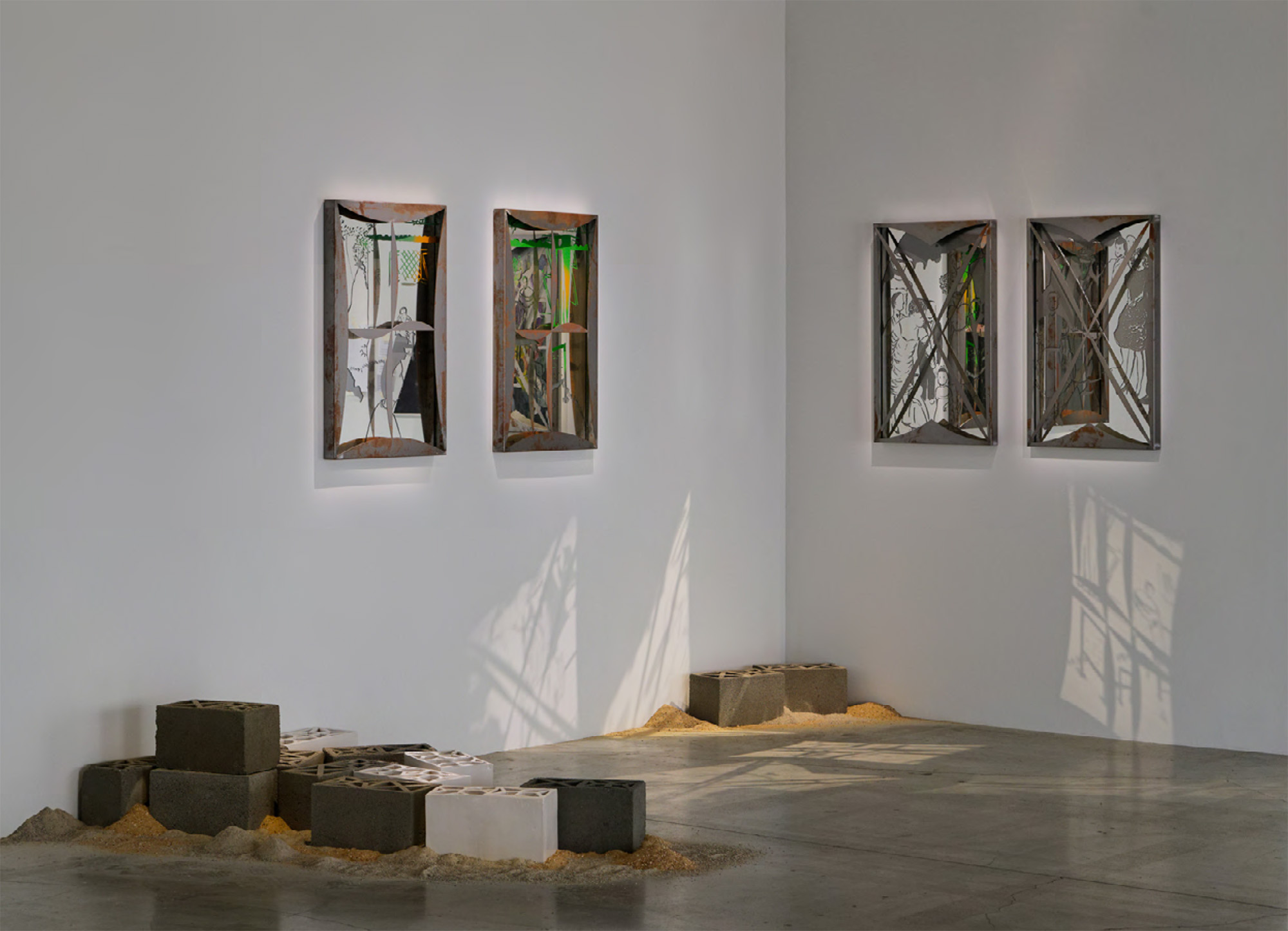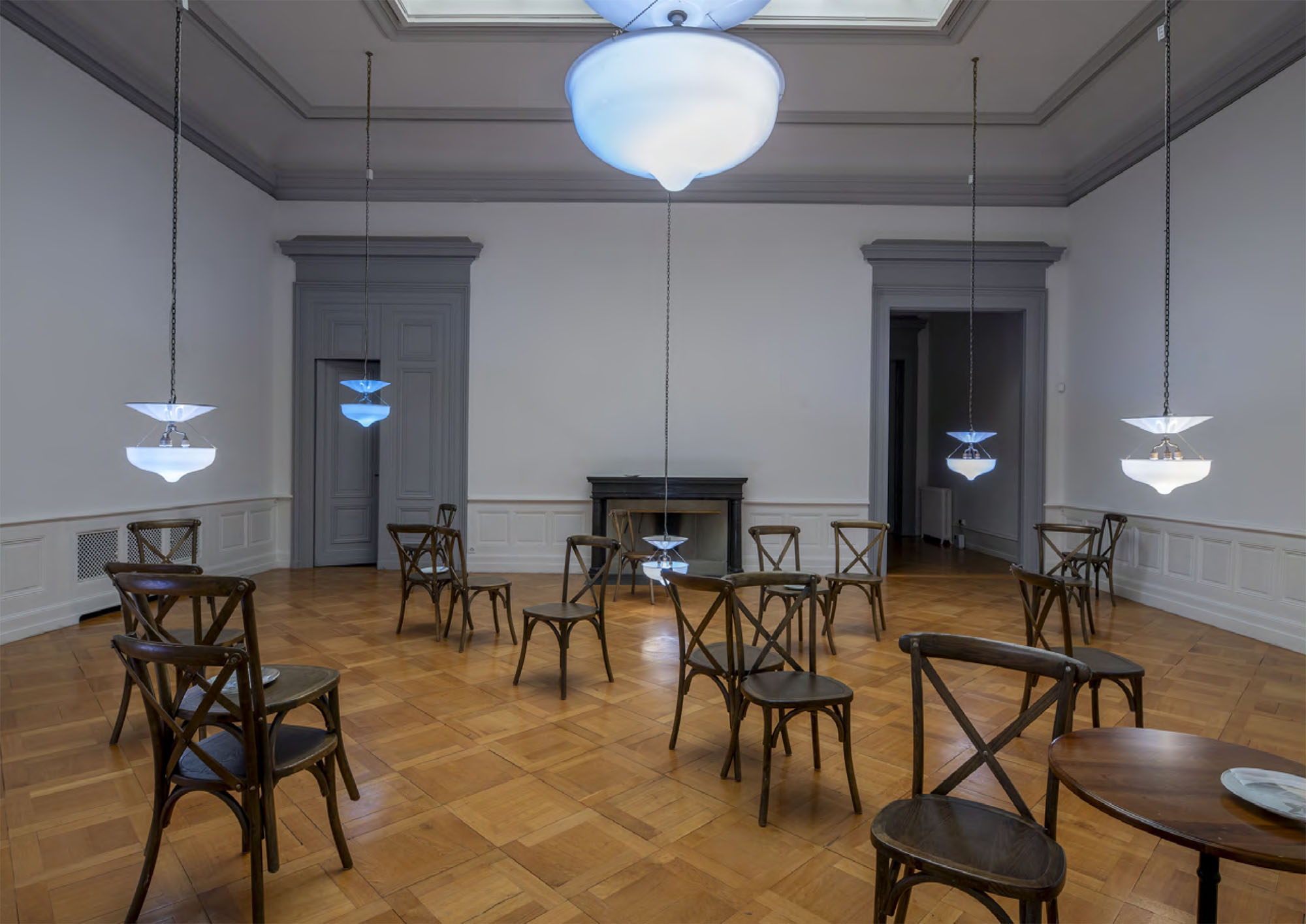The soft sand shifts under your feet, time passes uncertainly. There is a memory here - the sky glimpses you between clouds, air crystalised by salt and the heat of the day sticking to your skin. Across the road sunlight passes through a paneless window and a pile of bricks sit, unwilling to shape themselves.
Did you know that concrete makes for bad air circulation? And that there is no place for chance in domesticity? Well, I didn’t. These are things that Monika Emmanuelle Kazi told me. In our conversation we quickly came to the fact that the past is not real, and that it is also our motivation for everything - i.e. that Monika is a deeply nostalgic person. Monika’s work transports you instantly into a sense of déjà vu, or if you are me, déjà rêve. A feeling of being inside a memory, or a dream; the grasping of a distant recollection that has left fading footprints in your psyche. Her employment of the haptic and optic mean that each installation involves all of the senses, with olfactory features and soundscapes being integral.
Monika was raised between Pointe-Noire and Paris. A coastal city and a river city. During our discussion Monika described how cement was sold and exported all over the world as the primary material for home building - a transposed European norm. She told me that concrete creates bad air circulation, which creates condensation, mold on the ceiling and cracks in white walls. She said “there is always this notion of building something new from a past that is still blurry.” Are we ever building upon sturdy terrain?
Her background in architecture means that many of the materials she uses are - say it with me - architectural! Monika constructs spaces, or constructs with spaces, often using an exhibition space to prompt the work she creates. Her use of natural elements is sometimes in confrontation with the structure of art spaces. She frequently places sand, dirt or salt on the floor, such as in the exhibition: Tituba, qui pour nous protéger? Which explored domestic memories using cement and ceramic custom bricks (Terre-plein, terres mères) formed with motifs from the Kongo Kingdom era, surrounded by sand and accompanied by a pair of diptych ‘windows’.

Monika’s performance piece A staged scene for destiny involved herself playing the part of a ‘woman-calculator’ who divines the future, or more accurately, plans the future. While we chatted she brought up the proverb ‘to know your future you must know your past’. I think that this is an interesting progression, as much of her work involves itself with history, both nostalgic personal archives and largescale political pasts. Such as her installation Morose, where she used humidity to create salt crystal drawings of her family photos on colonial-era Dutch tapestries. Humidity therefore creating a visual disruption in the colonial imagination. You cannot dominate time, or sand. The next phase of her work seems to be about reaching into the future, creating pathways into a future understanding.
Importantly, Monika asks the question: what are the dominant visions of the future? And I ask, who decides our destiny? Is it those guys over there?! Eish, since when?! Monika’s work intervenes directly, opposing the notion that there are fixed or eternal histories and futures. Monika shapes the present, materially. She passes through and the room is different, the feeling is different and something has radically changed. Monika does not simply shape space, but she allows herself to be shaped in turn - reciprocity and relationality are fundamental. It is not building cinderblock apartments in a place that has no business with cement, it is breathing the air, feeling the stone, and finding what fits.
When discussing dominant narratives, Monika said: “a history that is closer to reality is a history that has the freedom to disappear and come back again”, rather than an untruthful fixed past or an eternal colonial present. She said she reconciled with the fact that subnarratives, things that are forgotten/destroyed/decontextualised perhaps follow the natural frequency of existence. Disappears-returns, forgets-remembers, trough-crest. Sequences, tempo, waves, are all part of Monika’s creative process. She deliberately shifts the atmosphere of a white-cube space designed to be static. She engages the past and reckons with the future. Safe to say, I am extremely curious to see what Monika creates during her upcoming in-situ residency with blank projects in Cape Town.

Our conversation reminded me that you can touch the world, like, literally. This is a malleable existence; if we can change the room, change the feeling, shape the meaning, we touch time. I do not believe that destiny or fate are killers of agency, particularly a destiny set by those unaware that beneath their feet are shifting sands. The regulation of the present leaves no room for chance. Fate doesn’t care though. Monika’s involvement with shaping things comes from her interfacing with discomfort, and the accompanying necessity to cultivate spaces of comfort, of home. She is finely attuned to the atmosphere of a space, and is able to play with this hazy and multidimensional reality in a way that is somehow both unfathomable and totally tangible. Perhaps that means fate is here, in the sand, on the floor, seeping through the wallpaper.


